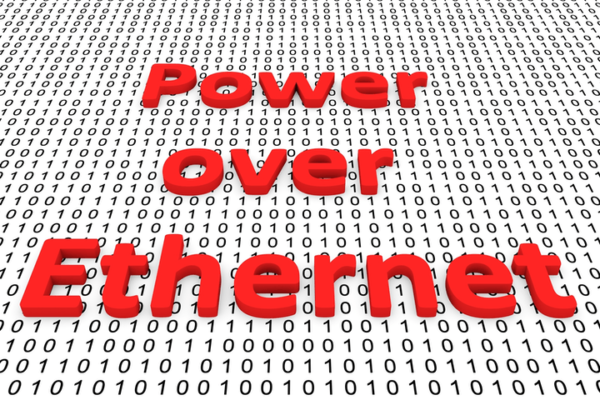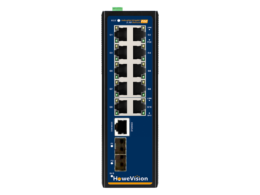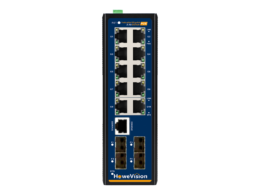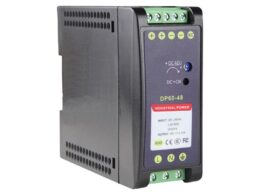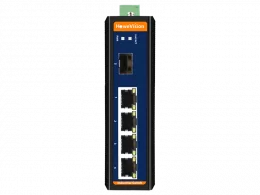Introduction
The Ethernet networking protocol is a revolutionary technology that integrates data and power on the same cable. With a non-PoE device, you need a power cable to power the device and a copper cable for network data. Still, with Poe, it allows devices to receive power in parallel to data over existing twisted-pair Ethernet infrastructure without making any modifications to it. Various Network devices are being powered up using this method. This power over Ethernet technology is being used to power available network devices that consume less power.
For example, when you walk around any building and notice electrical power outlets everywhere while finishing the interior of a building. Electricians run electrical cables and install electrical outlets in any location that might need power, such as refrigerators, TVs, PCs, etc. As a network engineer, one might think that the electrician must have provided enough power to the wiring closets to power the networking devices. PoE, however, changes that thinking so that the responsibility to provide electrical power to some devices can fall to the network engineering team.
Network devices that this power over Ethernet technology can operate include IP phones, wireless routers, and IP cameras. In the modern environment, power over Ethernet technology is so well-established that it powers gazillions worldwide.
Power over Ethernet Terminology
With PoE, some devices, typically a LAN switch, act as a Power Sourcing Equipment, also known as PSE, which supplies DC power over the Ethernet UTP cable.
A powered Device is a device that is being powered over the Ethernet cable rather than by another power connector on the device.
PoE Standards
There are several techniques for transferring the power over these Ethernet cables, defined under some IEEE standards. Under this standard, there are several things defined, like:
- What is the maximum amount of power that Ethernet cables can transmit?
- What is the full length of cable that we can safely use to transmit data?
- What should be the highest voltage or current that these Ethernet cables can handle?
Under IEEE 802.3.af, the PSE’s maximum power is 15.4W, and the total power the powered device can receive is 12.95W. The received power is lesser than the supplied power because some of the power gets lost across the cable resistance during transmission.
Under IEEE 802.3.at, the maximum power supplied by the PSE is 30W, and the total power received by the powered device is 25.5W. Also known as PoE+.
Under IEEE 802.3.bt, the maximum power supplied by the PSE is 50W, and the total power received by the powered device is 100W. This standard is still in the development phase.
Workings of the PoE
The first thing PSE (Power Sourcing Equipment) tests before supplying power to network devices is whether they are PoE-enabled or not. To ensure this, the PSE sends voltage-based signals to these Powered Devices. It receives the signature of these powered devices in response, which is nothing more than the resistance across the powered device. Resistive Power Discovery is the entire signaling procedure for detecting the resistance across the powered device. IEEE802.3af standard states it.
Some external resistance is being isolated from the main circuitry in every powered device. Once this signature detected procedure is completed, and if the powered device is eligible to receive the PSE’s power, the actual circuit will get exposed to the Power Source Equipment.
If the detected resistance ranges from 19KΩ to 25KΩ, this powered device can receive power from the Power Source Equipment. If the detected resistance is less than 15KΩ or more excellent than 33kΩ, this PSE will not supply this powered device power.
In this way, the Power Source Equipment determines how much power should be supplied to that particular powered device.
How to determine if the switch is PoE?
There are four basic ways to check if the switch has PoE enabled or not:
- Log in to a Cisco switch and type show power inline; if the switch supports PoE, the output should show which ports are consuming power, a summary of specifications, the PoE status of the switch, and so on. A command like this should be available on any controlled PoE switch.
- Look up the model/line of your network equipment on the internet to see if it includes PoE as a standard.
- Check for PoE with a testing tool.
- Look for power injection devices that are “midspan.” These may occur on either the switch or the client side (or somewhere in between). Two network interfaces, a data in and a data/power out, will be available on the small form factor models. Larger ones may have several data in and data/power out pairs.
How to connect a PoE-enabled to switch to the PD?
If the network switch is PoE enabled, one can directly connect this power source equipment with a powered device like an IP camera. However, if the switch is not PoE enabled, or in other words, if it cannot supply power to the powered devices, then you will require another device called the Midspan. This Midspan adds the
A standard network switch with PoE capability.
The Ethernet cable has eight wires. Under the 10 Base T and 100 Base T networks, out of these eight wires, only four wires or two twisted pairs are being used for the data communication, and four wires remain as spare. In the wiring arrangement, the data pairs will go as it is and the Midspan over the spare pairs supplies the power. This method is known as the Type-B or the alternative B method.
In the case of a Type-A or alternative A method, power is being supplied on the same pairs over which the data is being carried. This technique is known as the Phantom Power feed technique.
Benefits of using PoE
There are several advantages of using this Power over Ethernet technology.
- Savings in time and money: By reducing the installation time and cost of electrical wiring. Network cables do not require the installation of a trained technician and can be placed almost anywhere.
- Reliability: Rather than a series of dispersed wall connectors, POE power comes from a single, universally compatible outlet. A stealth power supply can power it or be remotely controlled to deactivate or reboot devices.
- Flexibility: Devices like IP cameras and wireless access points are now placed even at inaccessible locations where it is difficult to provide the power supply and reoriented easily if necessary since they are not strapped to an electrical outlet.
- Scalability: Getting power on the network allows for easy and efficient overall network installation and delivery.
- Safety – POE distribution is intuitive, and it is enacted to prevent network equipment from exhaustion, underpowering, and improper installation.
Applications of PoE technology.
POE has a wide range of applications, but the following are the three most important:
- IP Phones: The initial POE program was VoIP phones. Phones that use POE have a sole link to a wall socket and shut down fortuitously, much like older analog devices.
- IP cameras: Power over Ethernet (POE) is now standard on networked surveillance technologies, allowing quick stationing and transmogrifying.
- Wireless devices – PoE-compatible Wifi and Bluetooth APs, as well as RFID readers, allow for a distant location farther from AC outlets and migration during site surveys.
Future of PoE
The IEEE 802.3.bt standard, which is still under the development phase, might be valid for the Gigabit Ethernet Network. In the Gigabit Ethernet, all four pairs are being used for data transmission. So under this standard, all four pairs will carry the power. Because all four pairs are being used for the power transmission, the maximum delivered power will also be more.
